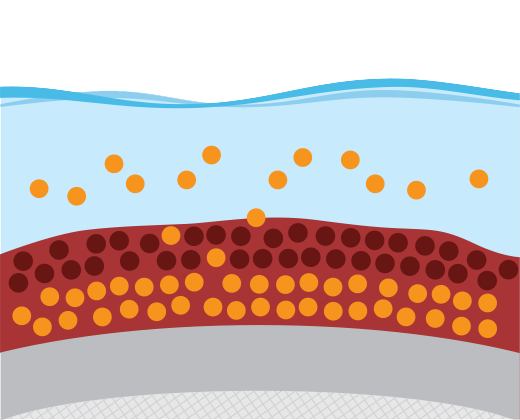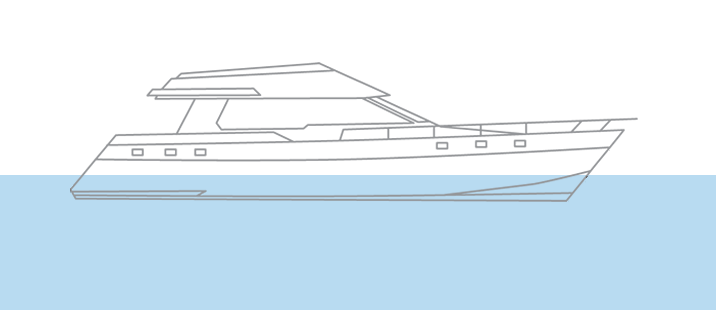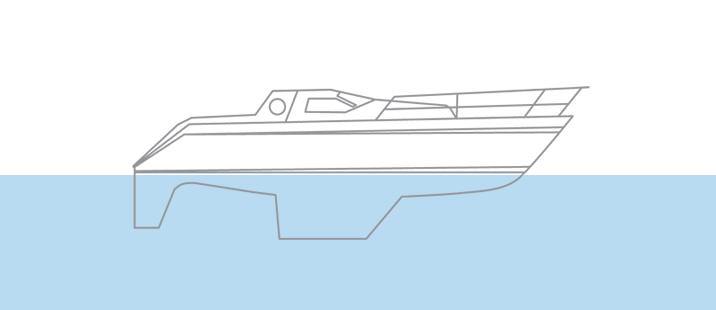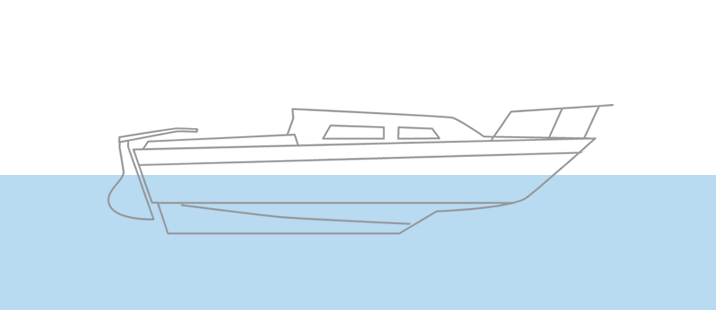Which type of antifouling should I use on my boat?
Having good antifouling protection is vital to protect your boat. But when the time comes to reapply the antifouling ready for a new season, the choices can be overwhelming. With a little knowledge, you’ll easily be able to find the right product. The key thing to understand is: do you need hard or eroding antifouling?
Hard antifouling

Hard antifoulings work by releasing biocide from the surface of the coating to deter fouling organisms. Hard antifoulings don’t really wear, but abrasive material in the water such as silt and sand may lead to a very minor reduction in the film build. Biocide leaching rate reduces over the lifetime of the product. After a few seasons, there may be a residual build-up of product that needs to be removed.
If you have a fast boat, or a fast boat that is used very regularly, then hard antifouling is usually the best product to choose. Boats moored in fresh water normally use these types as eroding antifoulings are designed to erode in salt water and may not erode sufficiently in fresh water. For those who like to race, hard products are a good option as they can be burnished or wet sanded to a smooth finish prior to racing.
Within this group there is type that contains a fluoro micro-additive to help provide a smoother faster film than a standard hard type might otherwise provide. This is favoured by keen racing types who place more importance on keeping their hulls smooth and clean rather than its antifouling performance.
Eroding antifouling

Eroding antifoulings, also known as soft or ablative antifoulings, also work by releasing biocide. However, this type of over antifouling slowly erodes in seawater eventually leaving little or no antifouling on your hull. If you wipe the hull at any time you’ll see a small cloud of product washing away. Overall, they offer very good all-round performance in a wide range of fouling conditions.
Eroding antifoulings are great for those who prefer a low maintenance option, as generally speaking there is far less accumulation of old paint on the hull after each season. However, a slow build up can still occur if excessive paint is applied at each application. This will eventually need to be removed as it may become unstable and lead to problems when new antifouling is applied.
SPC
Within this group of eroding/ablative types, there is a sub group of products known as self-polishing co-polymer antifoulings. With a more complex chemistry they offer a very controlled release of biocide and erosion level. As the paint film tends to become smoother over time, they are known as self-polishing. These types are used by larger vessel owners who require longer periods between maintenance and anyone after increased all-round performance.
How much paint do I need?
We'll help you calculate how much paint is needed.
What product do you want to paint
What type of boat?

Full bodied craft

Fin keeled racing craft

Medium draft racing craft
What is the underwater area?
Show Formulations1 x LWL x (B+D) = Underwater Area (m2)
0.5 x LWL x (B+D) = Underwater Area (m2)
0.75 x LWL x (B+D) = Underwater Area (m2)



Abbreviations
LOA = Length Overall
LWL = Length Waterline
B = Beam
D = Draft
F = Freeboard
What application method?
Recommended no. of coats: ?
How many coats do you want to apply?
If you put less than the minimum recommended numbers of coats, it may affect the performance of the coating.
To paint a ? x ? x ? ??, with ? coats
You'll need ? litres of
Warning that this tool is an estimator only
View productPaint your boat like a pro
Find the best products to keep your boat in great condition
Get all the support you need to paint with confidence
Benefit from our continuous innovation and scientific expertise






